Any hockey fan worth their salt knows the term “Original Six.” Those words immediately bring to mind images from the NHL’s rich history–from a time when goalies had no masks, and giants like Eddie Shore and Toe Blake patrolled the ice. Most fans can also correctly identify the teams that make up the Original Six: The Montreal Canadiens, Toronto Maple Leafs, Detroit Red Wings, Chicago Blackhawks, Boston Bruins and New York Rangers. Where things start to get fuzzy is when you start asking people why these teams are called the Original Six in the first place (SPOILER ALERT: It’s not because they were the first six teams in the NHL).
The NHL Original 6 Comprised Of:
- Montreal Canadiens (est. 1909)
- Toronto Maple Leafs (est. 1917)
- Detroit Red Wings (est. 1926)
- Chicago Blackhawks (est. 1926)
- Boston Bruins (est. 1924)
- New York Rangers (est. 1926)
But in order to understand how these teams became known as the Original Six, we need to jump in the Wayback Machine and look at how the NHL came to be.
The Birth of a League
The NHL was “born” in November of 1917 when four club owners from the National Hockey Association (NHA) formed a new league due to ongoing disputes with the fifth NHA owner (Eddie Livingstone, owner of the Toronto Blueshirts). Because the NHA constitution prohibited them from removing Livingstone from the league, they instead voted to remove themselves from the NHA. At the same time, they formed a new league and called it the National Hockey League. Livingstone was now the only remaining owner in the NHA, and in spite of Livingstone’s numerous lawsuits, the league soon suspended operations permanently.
The fledgling NHL had some problems right out of the gate as well. Without a team in Toronto, the NHL had no presence in one of Canada’s largest cities. At the same time, the Quebec Bulldogs decided that they could not participate in the league’s first two seasons due to financial difficulties. This left the new league with only three teams (the Montreal Canadiens, Montreal Wanderers, and Ottawa Senators). To address both issues, the league awarded a temporary franchise to the owners of Toronto’s Arena Gardens, which was the only professional-level arena in the area.
The Toronto team had no official nickname, but still won the NHL’s first league championship (using many players from Livingstone’s Toronto Blueshirts). They also won the Stanley Cup by defeating the Vancouver Millionaires of the Pacific Coast Hockey Association (PCHA).
The NHL’s First Season
The NHL’s first season started with four teams but was quickly reduced to three when the Montreal Arena burned down only four games into the season, leaving the Montreal Wanderers without a place to play. The team had been having problems from the beginning, and without an arena, they disbanded permanently. The next season Toronto’s “team to be named later” was granted a permanent franchise, becoming the Toronto Arenas. The Arenas are now listed as the 1918 Stanley Cup champs (their name was added to the Cup in 1947), but at the time they won, they still had no official nickname.
The four franchises (Montreal, Toronto, Quebec and Ottawa–with Quebec eventually moving to Hamilton) remained the only teams in the NHL until 1924 when two expansion teams joined (the Boston Bruins and the Montreal Maroons). The NHL was now at six teams, just not “the” Original Six. Over the next 18 years, teams would join and leave the league periodically–the NHL had as many as ten franchises during this era. But the Great Depression and World War II took their toll in more ways than one, and with the disbanding of the Brooklyn Americans in 1942, the NHL had shrunk back to six teams.
The Original Six Era
For the next 25 years, the six teams left standing at the beginning of the 1942 season were all the NHL had. It was these six teams that went on to become known as The Original Six. But that name only took hold after the NHL expanded in 1967, when they added six new teams and doubled in size. The term “Original Six” started appearing in newspaper articles in 1967, and was used to differentiate the six existing franchises from the six new expansion teams. The phrase gained popularity and soon became a household name throughout the hockey world.
So there you have it–the birth of The Original Six, and how they got their name. But what about the six teams themselves? The stories behind their names are every bit as interesting. The next stops in our tour will look at each team’s name and how it evolved over the years:
The Montreal Canadiens
The Canadiens are the oldest franchise in the NHL. In fact, they are older than the NHL itself. One of the NHA teams that originally formed the NHL, the Habs have continuously operated since 1909. In their first season, they were known as “le Club de Hockey Canadien.” The next year they were sold to George Kennedy, the owner of “Club Athlétique Canadien,” and had the letters “CAC” on the front of their jerseys. The CAC fell on hard times, so the hockey team was incorporated in 1916 as its own separate entity, “le Club de Hockey Canadien.”
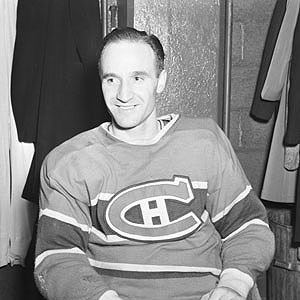
At this time the first version of their iconic “CH” logo was introduced–the “H” inside the logo stands for “Hockey,” not “Habitants,” as is often claimed. The club’s official name is in French, as the original purpose of the team was to showcase the best francophone hockey players in Canada. Being a French-speaker is no longer a prerequisite to play for the Canadiens, but it still remains a very large part of the team’s culture.
The Toronto Maple Leafs
Toronto is the only other current team that has been around since the founding of the NHL. They began their existence as the temporary “team to be named later” noted above. Even though they drew many players from the NHA Toronto Blueshirts, they do not claim any Blueshirts history as their own. After their first season (1917-18), they were formally named the Toronto Arenas. The Arenas withdrew from the NHL late next season (1918-19), were renamed the Tecumsehs on December 7, 1919 and were sold to a new ownership group, who renamed them the Toronto St. Patricks a week later. Late in the 1926-27 season, the team was sold again–this time to Conn Smythe, who changed the name of the team to the Toronto Maple Leafs.
“The Maple Leaf to us, was the badge of courage, the badge that meant home. It was the badge that reminded us all of our exploits and the different difficulties we got into and the different accomplishments we made. It was a badge that meant more to us than any other badge that we could think of… so we chose it… hoping that the possession of this badge would mean something to the team that wore it and when they skated out on the ice with this badge on their chest… they would wear it with honour and pride and courage, the way it had been worn by the soldiers of the first Great War in the Canadian Army.” — Conn Smythe
The Boston Bruins
Since their first NHL season in 1924, making them the oldest American NHL team, the Boston Bruins have had the same nickname. Original owner Charles Adams hired Art Ross as GM, and together, they came up with a name for the team. They decided on the Bruins, from an Old English term for brown bear. The term fit very well with the initial vision of Adams, portraying the image of an animal with strength, speed, power and cunning. Adams also wanted the team’s colors to match those of his grocery store chain (Finast), which were brown and yellow. The name fit in quite nicely with the proposed color scheme as well. More on the actual logo here…
The Detroit Red Wings
The fall of 1926 saw three new expansion teams join the NHL. One of these teams was the Detroit Cougars who, despite their name, played their home games across the border in Windsor, Ontario. The team’s roster was actually purchased from the Victoria Cougars of the Western Hockey League, and they retained the nickname for the move east. In 1927, they moved into Detroit proper and their new home in Olympia Stadium. However, the team was struggling, and head coach/GM Jack Adams renamed the team to the Detroit Falcons in 1930. In 1932, the team was bought by millionaire James Norris Sr., who worked with Adams to rename the team the Red Wings.
“Norris had been a member of the Montreal Amateur Athletic Association, a sporting club with cycling roots. The MAAA’s teams were known by their club emblem and these Winged Wheelers were the first winners of the Stanley Cup in 1893. Norris decided that a version of their logo was perfect for a team playing in the Motor City and on October 5, 1932 the club was renamed the Red Wings.” — Bob Duff.
The Chicago Blackhawks
Another member of the NHL’s class of 1926 was the Chicago Black Hawks. Owner Major Frederic McLaughlin purchased the roster of the Portland Rosebuds to secure players for his new team. Instead of keeping the name Rosebuds, as Detroit did with the Cougars, he decided to rename the team. His inspiration came from his own past.
“During World War I, McLaughlin had served as a commander in the 333rd Machine Gun Battalion of the 86th Division of the U.S. Army. Members of his division called themselves Black Hawks in honor of the Sauk Indian chief who sided with the British in the War of 1812. Surely, the Major felt, it would be a fitting name for the newest entry into the National Hockey League.” — blackhawks.nhl.com
In an interesting footnote, the team’s nickname was officially spelled as two words (Black Hawks) for 60 years–from their inception until 1986. Before the 1986-87 season, team officials looking at the original NHL contract from 1926 discovered that the team name was on the document as a single compound word (Blackhawks). Beginning in 1986, they officially changed their name to the Blackhawks to reflect this discovery.
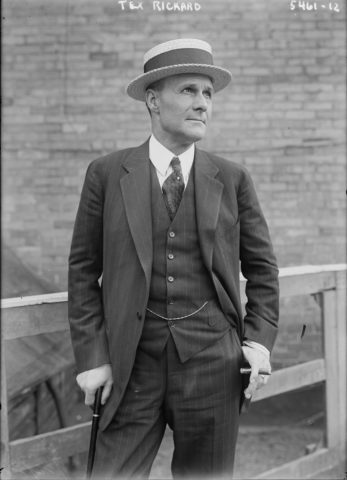
The New York Rangers
Our last stop on this tour of the Original Six teams is Broadway. The New York Rangers also joined the NHL in 1926, one year after the New York Americans were granted an expansion team. This second New York team was started by Madison Square Garden President G.I. “Tex” Rickard, who then hired Conn Smythe to build a team that could be competitive in the NHL from the beginning. While Smythe was out recruiting, New York sportswriters began referring to the upcoming team (which had yet to be named) as “Tex’s Rangers.” The nickname gained traction and when the time came to officially name the team, Rickard adopted it.
We hope you enjoyed this skate down memory lane as much as we did. At the very least, it should help you during the next hockey trivia night.
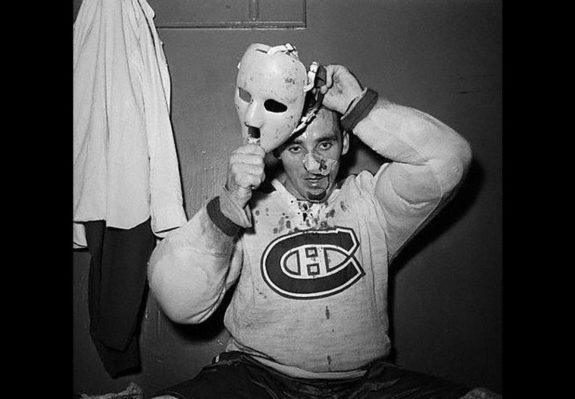
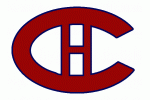
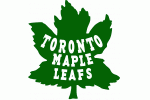
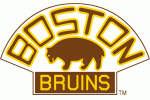
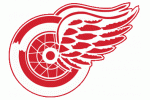
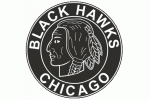
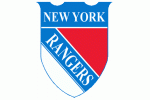
Good stuff, Kevin!
Why would a US soldier honor a chief who fought against the US Army in 1812? You wrote:
During World War I, McLaughlin had served as a commander in the 333rd Machine Gun Battalion of the 86th Division of the U.S. Army. Members of his division called themselves Black Hawks in honor of the Sauk Indian chief who sided with the British in the War of 1812.
Thanks for the read and comment!
There are many instances of our soldiers honoring Black Hawk, including naming several US Navy vessels after him. http://en.wikipedia.org/wiki/Black_Hawk_%28Sauk_leader%29#Examples_of_eponyms
And it wasn’t me who wrote that particular passage–it is a direct quote from the Blackhawks website.. http://blackhawks.nhl.com/club/page.htm?id=46778
Kudos to you Mr. Mizera!
Add this article to “The North American Experience”.
Thanks for the read and taking the time to comment, Tony!
@ Kevin: I remember reading a while back that the Rangers first logo was of a player on a rearing horse and holding his stick up in the air. Just wondering if you may have ever come across that. I have never been able to find it.
Jerry, thanks for the read and comment… I can’t say I’ve ever seen that one–I vaguely remember an editorial cartoon from that era of something similar, but not an actual logo. Maybe some of my colleagues here know something about it–I’ll take a look and report back.
After doing a little bit of research in my local library that professional hockey existed in Pittsburgh since 1896, even if the league didn’t “officially” start until 1901 which would actually make professional hockey in general and the teams in the area, assuming they still existed, older than even Montreal.
Just a fun fact that has no bearing on this article.
Thanks, Lou! I do recall that there was professional hockey in Pittsburgh for quite some time before the NHL, or even the NHA, started. It’s easy to forget that there’s hockey history all across North America. Great stuff there–and don’t forget that the Pittsburgh Pirates were in the NHL from 1925-1930..
Montreal: The Canadiens were originally called Les Canadiens or Le Club de Hockey Canadien, and then when George Kennedy purchased the team, they became the Club Athletique Canadien.
Toronto: It’s actually debatable as to whether or not the Maple Leafs and the Blue Shirts (or Toronto Hockey Club) are the same team. Yes they had many of the players, but it has also been said that the Arena Corp. had acquired the Blue Shirts franchise. The team with drew during the 1918-19 season, and was sold to a new ownership group. For about a week the team was called the Tecumsehs after a previous franchise, but was quickly renamed the St. Patricks. Conn Smythe did not purchase the Leafs following the 1926/27 season, but during it. Smythe bought the team on Valentine’s Day and 3 days later, renamed the team the Maple Leafs. Some feel that the team actually dated back to 1919, when the Toronto St. Patricks appeared on the scene.
Thanks for the read and reply, George! In doing the research, I thought I saw something about the Canadiens original names, but it somehow got lost in my notes–definitely going to flesh that section out more.
You’re absolutely right that there’s a lot of debate about when the Maple Leafs franchise actually started… Wherever possible, I used the team sites themselves as a guide. The TML’s official site gives their history as starting with the Arenas, so in the absence of compelling information to the contrary, I went with that. I lean towards not including the Blue Shirts as part of the Leafs, mainly because even though the players were bought by the Arena Corp., I believe Eddie Livingstone still held the rights to the Blue Shirts team in the NHA… Arena Corp had to pay Livingstone after they won the Cup, and I think there was a lawsuit over how much was owed (Arena Corp maintained $6,000, but Livingstone contended he was owed $20K).
I’ve updated the details on Conn Smythe’s purchase. Great info here–thanks again, George.
Great article, thanks! There are some funny dates in the Chicago Blackhawks section, though. (1926 + 20 = 1986?) Also an extra period instead of a comma in the area describing the Bruin characteristics.
Thanks for the read and comment! Good catch–the Blackhawks should have read as 60 years, and the formatting is right now in the B’s section.